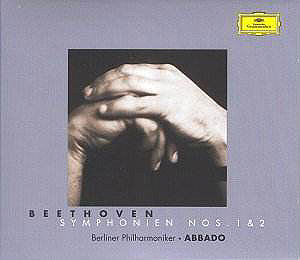 Composer: Frédéric Chopin
Composer: Frédéric Chopin
Works: Ballade No. 3 in A flat, Op. 47; Ballade No. 4 in F minor, Op. 52; Nocturne in D flat, Op. 27 No. 2; Nocturne in C minor, Op. 48 No. 1; Nocturne in E, Op. 62 No. 2; 24 Préludes, Op. 28
Performers: Nikolai Lugansky (piano)
Recording: Recorded 20-24 April 2001, Teldec Berlin Studios
Label: ERATO 0927 42836-2
Frédéric Chopin’s oeuvre stands as a pinnacle of Romantic piano literature, characterized by its profound emotional depth and intricate technical demands. The collection of works presented in this recording by Nikolai Lugansky showcases not only the diversity of Chopin’s compositional style but also the evolution of the Romantic idiom during the early 19th century. The 24 Préludes, Op. 28, often viewed as a comprehensive exploration of the piano’s capabilities, embody a unique interplay of brevity and narrative complexity, making them a cornerstone of the solo piano repertoire.
Lugansky’s interpretation is marked by a remarkable balance between technical precision and expressive nuance. His command over the instrument is immediately apparent, particularly in the Préludes, where he navigates the delicate textures with both agility and poise. Each prelude is treated not merely as a standalone miniature but as an integral part of a larger tapestry, reflecting the cyclical nature of Chopin’s thematic material. The emotional arcs he draws from the music are compelling, particularly in the more turbulent sections, such as Prelude No. 24 in D minor, where Lugansky’s dynamic control and phrasing illuminate the underlying drama.
The two Ballades included in this recording are noteworthy for their narrative structure and emotional breadth. In the Ballade No. 3, Op. 47, Lugansky’s interpretation is imbued with an urgency that propels the music forward, creating an exhilarating sense of momentum. He deftly navigates the contrasting moods, from the lyrical opening to the stormy climaxes, demonstrating a keen understanding of the work’s dramatic architecture. This is in stark contrast to Artur Rubinstein’s more introspective approach, which, while beautifully lyrical, may lack the visceral intensity that Lugansky brings to the table.
The Nocturnes, with their lush harmonies and intricate ornamentation, allow Lugansky to shine in his capacity for nuance. The Nocturne in C minor, Op. 48 No. 1, in particular, benefits from his ability to shape long lines with a sense of breath and space, creating a hauntingly beautiful atmosphere. The clarity of the recording captures the subtleties of his touch, allowing the listener to appreciate the delicate interplay of melody and accompaniment. The engineering quality of the recording is commendable, striking a fine balance between clarity and warmth, which enhances the atmospheric qualities inherent in Chopin’s music.
While there are certainly alternative interpretations that lean towards a more relaxed and reflective style, Lugansky’s vigorous approach offers a fresh perspective that invigorates Chopin’s music. His ability to convey a cohesive vision throughout the entire disc is particularly noteworthy; the transitions between the various styles of the works feel organic rather than abrupt. The sequencing of the Préludes, with their varied characters and moods, illustrates this seamless integration, inviting the listener on a journey that culminates in a deeper understanding of Chopin’s musical language.
This recording by Nikolai Lugansky stands as a significant contribution to the ongoing exploration of Chopin’s piano works. His interpretations are imbued with a passionate urgency that, while at times diverging from traditional approaches, ultimately reveal the emotional core of the music. The combination of exceptional technical prowess, insightful interpretation, and high-quality production makes this disc a compelling addition to any classical piano collection, particularly for those seeking a more dynamic and immersive experience of Chopin’s genius.



